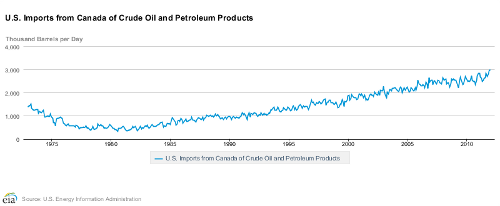“Boom Sayers”
Some of them are still singing, but technically markets seem to have finished the hymns of praise.
Signs Of The Times
This Year:
“Dollar Turns Bearish amid Disappointing Housing Data”
– Forex, March 26
“Heavy hitters such as Goldman Sachs and J.P. Morgan are now actively adding equity exposure.”
– Financial Post, March 27
“Betting On U.S. Homes Comeback”
– Financial Post, March 30
“The overall technical backdrop remains bullish so buy-on-dips is still the most profitable strategy.”
– Technical letter, March 30
* * * * *
Last Year:
“Stocks climbed as the better-than-expected data on confidence and manufacturing bolstered optimism on the economy.”
– Bloomberg, April 15, 2011
“Flight From U.S. Dollar”
– Financial Post, April 21, 2011
“Don’t Like a Weak Dollar? Might as Well Get Used to It.”
– Breitbart, April 26, 2011
Concerns about the dollar were so wide-spread that Geithner stated “We will never embrace a strategy to weaken the dollar”.
Our notes from then included someone else’s description of the Geithner Bond. “No principle, no yield and no maturity”.
The DX dropped to 72.70 as the good times ended on May 3rd and rallied to the 80 level as the panic about sovereign debt ended last fall.
On the recent surge to good times, the DX declined (accompanied by the usual bad press) to only the 78 level. The low as the bubble completed in 2008 was 71.33. The low on the speculative surge to March 2011 was 72.70 and the recent low at 78 sets a rising trend of important lows.
Against these, commodities (CRB) set a sequence of speculative spikes at 474, 371 and at 326 in February. Clearly, commodity speculators are not accommodating the Fed’s implicit policy of dollar depreciation.
It is worth noting a plea for help during the troubles of September, only six months ago:
“Investors just want to know, even if it is a Band-Aid, that there is some cure that’s going to be announced.”
* * * * *
Perspective
Our list of “Boom Sayer” exclamations has been accompanied by technical readings of momentum and sentiment usually found at important tops. Last week, Market Vane’s Bullish Consensus reached the highest reading since 2007. Also, as we have been discussing insider selling has reached significant levels.
We have been looking for a rolling top whereby not all sectors peak at the same time. This seems to be working out with cyclicals such as base metal miners and S&P Energy setting their highs in late February. Of Dow Theory importance, the Transports set their high in early February and the bounce seems like a failed test.
Overseas, the DAX, FTSE, Shanghai and Hong Kong set highs earlier in March and have recorded downtrends.
More recently, technical work such as yesterday’s “Bearish Divergences” provides confirmation of a topping stock market from an unusual point of view.
Under such conditions it has been prudent to sell the rallies.
Currencies
The U.S. Dollar is in a technical pattern leading to an outstanding rally. Historically, one of the features of the post-bubble condition has been a chronically firm senior currency. That’s against most currencies and most commodities, for most of the time.
Commodities
In momentum and enthusiasm, the CRB has been replicating the action in 1Q2011, but at lower levels on the index and in excitement. This year’s high was 326 set in the third week of February. At 306 today, taking out 305 would extend the downtrend.
This would confirm that last year’s high of 371 was, indeed, a cyclical peak.
Credit Markets
The action in longer maturities stopped favourable trends in mid-February. Over the past two weeks, a turn for the worse has started. The price on the sub-prime mortgage bond has broken down.
This has serious implications, as does the action in sovereign debt. As an example, yields for the Spanish bond has been rising since early March, taking out technical resistance. Taking out 5.75% will be a serious event. The chart follows.
Since the middle of March, yields and spreads for junk and high-yield have been moderately adverse.
Representing shorter maturities, the Ted-spread stopped narrowing in late February and the chart seems to be “bottoming” since.
And it is worth keeping in mind that after there has been joyous action in spread markets in the first part of the year, the seasonal reversal in May can lead to disaster in the fall.
INSTITUTIONAL ADVISORS
WEDNESDAY, APRIL 11, 2012
BOB HOYE
PUBLISHED BY INSTITUTIONAL ADVISORS
The following is part of Pivotal Events that was
published for our subscribers April 5, 2012.
Link to April 5, 2012 ‘Bob and Phil Show’ on TalkDigitalNetwork.com:
http://talkdigitalnetwork.com/2012/04/holiday-job-shocker/
BOB HOYE, INSTITUTIONAL ADVISORS
E-MAIL bhoye.institutionaladvisors@telus.net“>bhoye.institutionaladvisors@telus.net
WEBSITE: www.institutionaladvisors.com












 @KeithKohl1 on Twitter
@KeithKohl1 on Twitter









